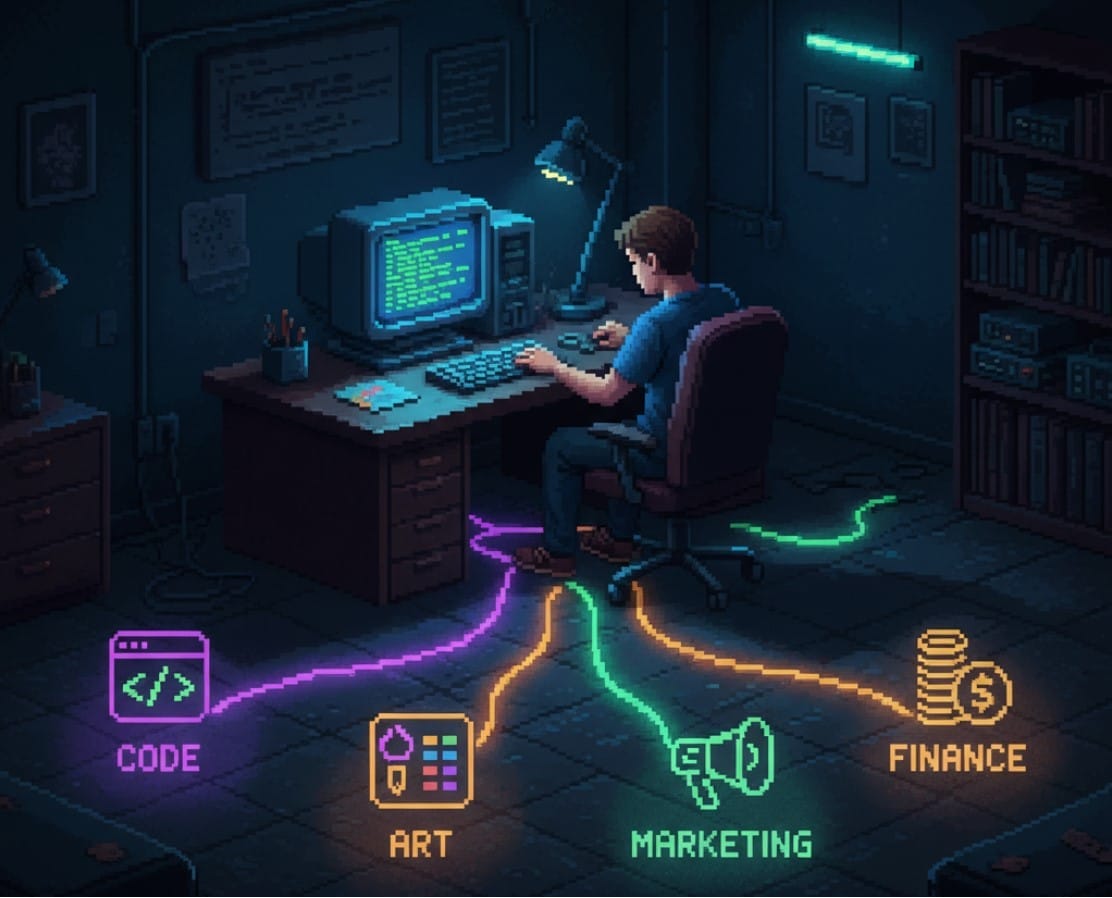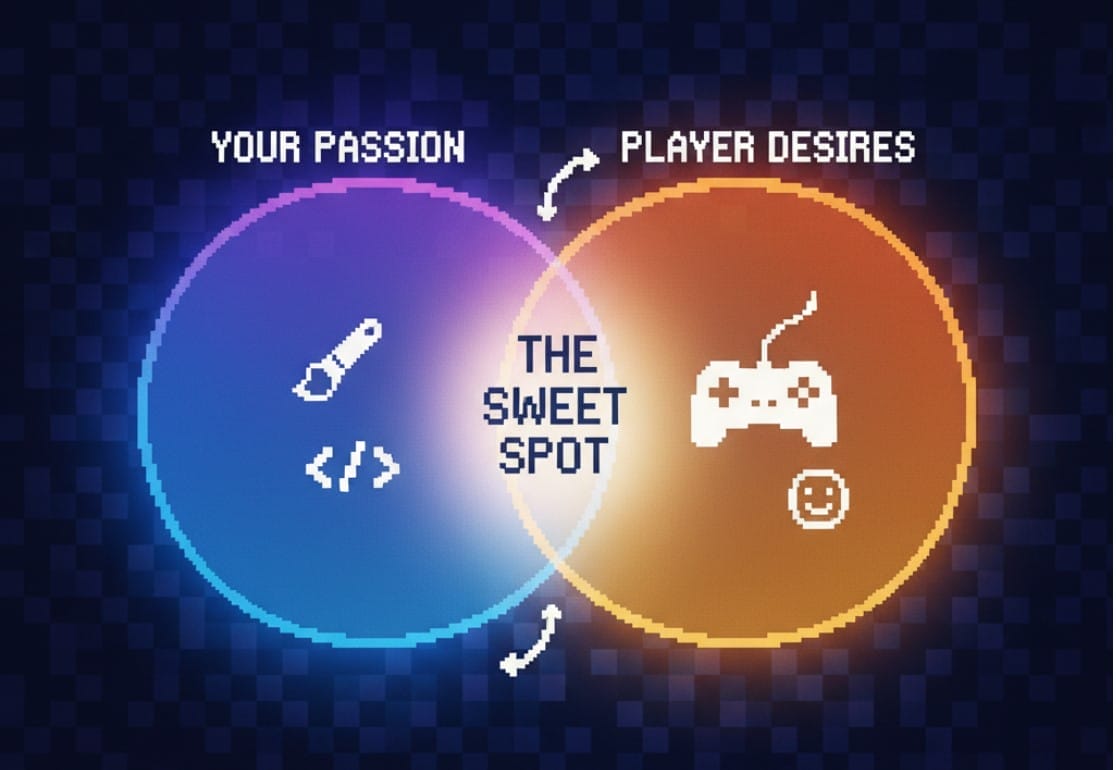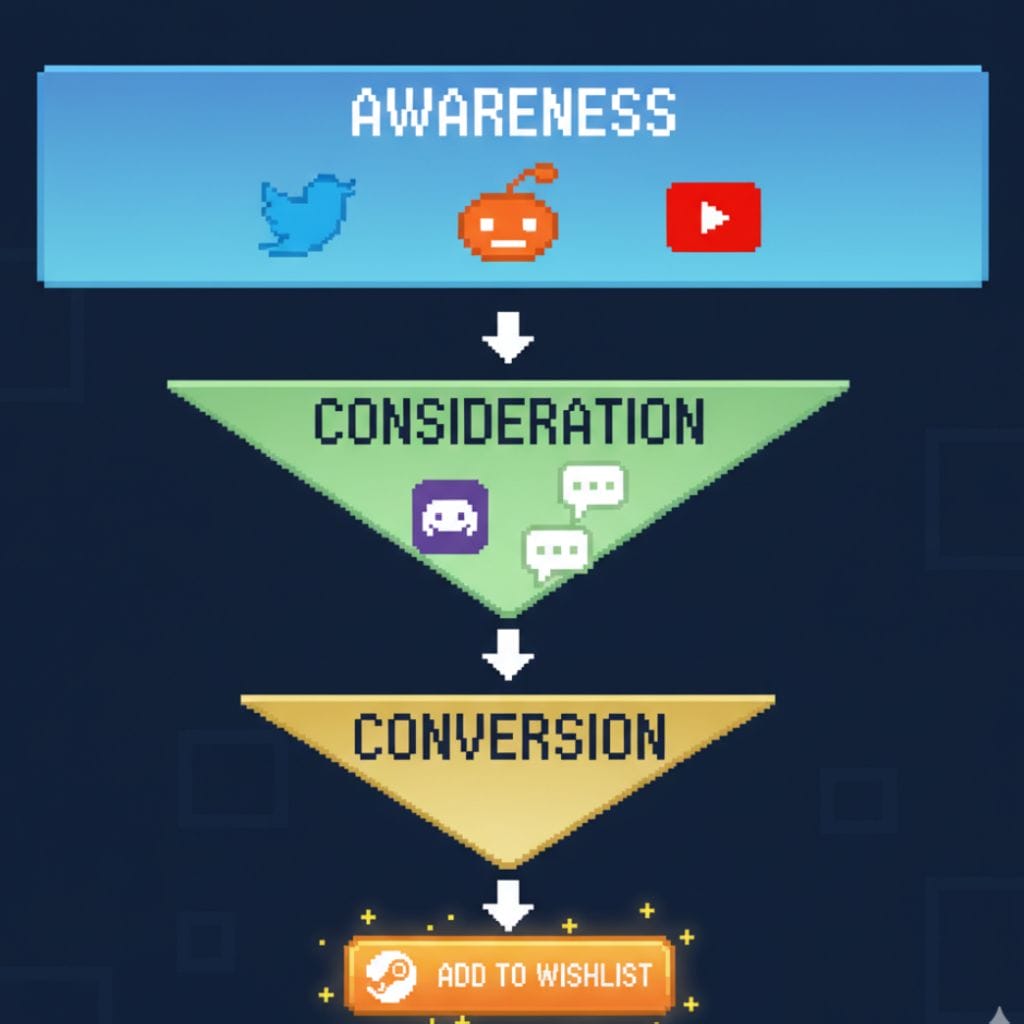The dream is intoxicating: quitting your day job to pour your heart and soul into creating video games. You envision a life of creative freedom, building amazing worlds and supporting yourself through your passion. But for many talented developers, this dream collides with a harsh reality. The studio sputters, sales flatline, and the passion that once burned bright flickers out. Why? Because they’ve missed the fundamental truth that a game studio is not just a creative endeavor; it’s a business and you must learn how to build a thriving indie game studio.
This isn’t another boring guide on how to register an LLC. This is a deep dive into the foundational mindset shifts and business strategies that separate a fleeting hobby from a sustainable, thriving indie game studio. Drawing on the hard-won lessons from countless studios, both successful and forgotten, we’ll dismantle the common misconceptions that hold developers back. We’ll explore where the money really comes from, how to find the people who will pay it, and how to build a resilient business that can support your creative vision for years to come. Prepare to fundamentally change the way you think about your game and your future.
Key Takeaways
- Shift from Employee to Entrepreneur: The most critical step is moving from an “employee mindset” (do work, get paid) to a “business owner mindset” (create value, find customers, and manage risk with delayed gratification).
- Customers Are Your True Employer: All money, whether from sales, publishers, or investors, ultimately comes from players buying your game. Your primary job is to find and serve these customers.
- Sell an Experience, Not Just a Game: Players don’t pay for your hard work or a list of features; they pay for the feelings and experiences your game provides, like mastery, creativity, or escape. Market that feeling.
- Marketing is a Day-One Job: Marketing isn’t something you do after the game is finished. It’s the ongoing process of building a community and driving wishlists on Steam, which are crucial for the platform’s algorithm to give you visibility at launch.
- Find Your Niche Through Empathy: Don’t build in a vacuum. Research the market to find the intersection between your creative passion and what an underserved group of players truly desires. Their complaints about other games are your opportunities.
- You Are the CEO: As a solo or small indie developer, you are responsible for everything—coding, art, marketing, finance, and community management. Embracing this total accountability is essential for success.
- Financial & Legal Foundations Are Non-Negotiable: Understand your budget and financial “runway” to scope your project realistically. Establish a legal entity (like an LLC) to protect your personal assets from business liabilities.
Part 1: The Critical Mindset Shift: From Employee to Entrepreneur
The single biggest obstacle for a new indie developer isn’t a lack of talent, funding, or ideas. It’s a psychological one: shedding the deeply ingrained “employee mindset” and adopting the perspective of an entrepreneur. This mental transition is the bedrock upon which your entire studio will be built.
The Paycheck Paradigm and Its Perils
When you work for a company, you operate within a clear, stable system. You are assigned tasks—write this code, design this level, create this character model—and in exchange for completing those tasks, you receive a regular paycheck. Your wage is a predictable reward for your labor. This creates a powerful mental model: do good work, get paid.
As an indie founder, this model is not just unhelpful; it’s actively destructive. You can pour 80-hour weeks into your game, produce breathtaking art, and write flawless code, but there is no guaranteed reward. The universe doesn’t owe you a paycheck for your hard work. This disconnect is a primary reason why so many developers burn out or quit. They are performing the labor but not receiving the immediate, consistent reward they’re conditioned to expect.
This is the classic entrepreneurial challenge of delayed gratification. The work you do today—polishing a game mechanic, building a community, designing a Steam page—might not yield a financial return for months or even years. As a business owner, you must find motivation not in the immediate paycheck, but in the long-term vision and the incremental progress toward a future goal. The reward isn’t just delayed; it’s also uncertain, which brings us to the next point.

Who Really Signs Your Paycheck?
In an employee’s world, the paycheck comes from the employer. It’s easy to carry this thinking over and assume that if you start a studio, you just need to find a new “employer”—a publisher, an investor, a successful Kickstarter campaign. This is a catastrophic mistake.
- Investors are not your employers; they are your partners. They provide capital in exchange for equity, and they expect a significant return on their investment. That return is generated by your customers.
- Publishers are not your employers; they are your service providers and distributors. They offer funding, marketing, and expertise in exchange for a substantial revenue share. Their entire business model depends on your game successfully reaching paying customers.
- Kickstarter backers are not your employers; they are your very first customers, pre-ordering a product and a promise.
Notice the common denominator? In every single scenario, the ultimate source of all revenue is the end customer—the gamer who decides your creation is worth their time and money.
This isn’t just a semantic difference; it’s a paradigm shift. Chasing funding before validating your idea with potential customers is like building a car factory without knowing if anyone wants to buy a car. The money from a publisher or investor is an accelerant, not the fuel itself. The fuel is, and always will be, customer demand. Look at the graveyard of well-funded games that failed because they never found an audience. A famous example is the collapse of Telltale Games. Despite massive success and investment, they struggled to maintain profitability, a stark reminder that even with big names and big money, a studio is only as stable as its ability to consistently create products that customers want to buy.
The Accountability Mandate: You Are the CEO
In a large company, you are shielded from danger. As a programmer, your responsibility is to deliver clean code. What the marketing team does with the final product is not your problem. You are a specialist, a cog in a much larger machine. If the game fails, you might lose your job, but you are not responsible for the company’s entire profit and loss statement.
When you go indie, that shield vanishes. You are standing right next to the “danger”—the direct financial consequences of the market’s judgment. You are responsible for all the results. This sounds terrifying, but it’s also the source of your greatest power. It means you have total control. This is the freedom you sought when you dreamed of going indie.
This total responsibility means you can no longer define yourself by a single skill. You are not just a programmer, an artist, or a designer anymore. You are the CEO, the Chief Financial Officer, the Head of Marketing, and the Janitor. Embracing this accountability is not about succumbing to fear; it’s about empowering yourself to build a resilient business. When you understand that no one is coming to save you—not a magical publisher, not a viral YouTuber—you start building the skills necessary to save yourself. You learn to market, to budget, to strategize, and ultimately, to steer your own ship.
Part 2: The Cornerstone of Your Studio: Deeply Understanding Your Player
Once you’ve made the mental shift to business owner, the next step is to build your entire studio on a single, unshakable foundation: a deep and empathetic understanding of your future players. Many developers fall into the trap of building a game for an audience of one: themselves. While passion is essential, a commercially viable game must exist at the intersection of your vision and a player’s desires.
You’re Not Selling a Game; You’re Selling an Experience
This is one of the most crucial concepts in business, and it applies perfectly to games. Gamers rarely buy a product based on a list of its features. They don’t hand over their money because your game has “10,000 lines of code” or “procedurally generated levels.”
They are buying a feeling. An experience. An escape.
- They don’t buy “a complex crafting system”; they buy the feeling of creativity and self-sufficiency.
- They don’t buy “a high-stakes permadeath mechanic”; they buy the adrenaline rush of survival and the thrill of mastery.
- They don’t buy “a branching narrative with 12 endings”; they buy the emotional journey and the fantasy of making meaningful choices.
Your talent, your hard work, and your brilliant ideas are the ingredients. The experience is the finished meal. Gamers pay for the meal, not the recipe. When you start framing your game in terms of the emotional experience it delivers, your entire approach to development and marketing will change. You’ll write better store page descriptions, create more compelling trailers, and focus on the features that truly enhance that core feeling.
Market Research for Indies: Finding Your Niche
“Market research” can sound like a soulless corporate term, but for an indie, it’s an act of empathy. It’s about finding the community of players who are desperately waiting for a game just like yours—they just don’t know it yet. It’s about finding a gap in the market that your unique vision can fill.
The classic example is Eric “ConcernedApe” Barone and Stardew Valley. He didn’t just decide to make a farming game. He was a fan of the early Harvest Moon series and felt the newer titles had lost the magic. He identified a void in the market left by a beloved franchise and built a game that not only filled that void but improved upon the formula in countless ways. He understood what players were missing and delivered it.
Your research doesn’t need to be complicated. Start by asking these questions:
- Who is my ideal player? Go beyond “someone who likes RPGs.” Are they a hardcore min-maxer who loves complex systems, or a casual player looking for a relaxing story? How old are they? What other games do they love? Create a simple “player persona” to keep in mind.
- Where do they gather online? Find the subreddits, Discord servers, and forums dedicated to games similar to yours. Don’t just jump in and spam your link. Lurk. Listen. Understand their language, their in-jokes, and most importantly, their complaints.
- What are their pain points? What do they complain about in the games they currently play? “I love Game X, but I wish the inventory management wasn’t so clunky.” “Game Y is great, but the story ends right when it gets good.” These complaints are pure gold. They are a literal roadmap for features that will make your game stand out.
- Analyze the Market Landscape: Use Steam and tools like SteamDB to research your genre. What tags are common? What do the top-selling games in your niche do well? What do the negative reviews complain about? Look for “blue oceans”—areas where there is clear player demand but little competition. The explosive success of Vampire Survivors came from identifying and perfecting a simple, satisfying gameplay loop in a genre (bullet hell/roguelite) that had room for a new, arcade-style take.
This process isn’t about becoming a corporate sellout who chases trends. It’s the opposite. It’s about finding the specific, underserved audience that will connect most deeply with your personal creative vision.

Part 3: The Engine of Growth: Marketing From Day One
For many developers, “marketing” is a dirty word, conjuring images of sleazy salesmen and manipulative ads. It’s the thing you begrudgingly do after the “real work” of making the game is finished. This is a recipe for commercial failure.
In the modern indie landscape, marketing is not a separate activity; it is inextricably linked to development. It’s the process of finding your audience, building a community, and sharing your journey. If you wait until your game is launched to start marketing, you are already years too late.
The Wishlist: Your Most Important Metric
On platforms like Steam, the wishlist is king. A wishlist is more than just a potential future sale; it’s a direct signal to the platform’s algorithm. A large number of wishlists tells Steam that there is significant interest in your game. Consequently, when you launch, Steam is far more likely to promote your game on the front page, in discovery queues, and in various sales events. As Chris Zukowski, a specialist in indie game marketing, frequently explains in his talks and articles, a surge of wishlists right before and at launch is one of the most powerful drivers of visibility.
Your primary marketing goal throughout development should be to drive quality wishlists. This means your marketing efforts shouldn’t just be about shouting into the void; they should be about guiding interested players to your Steam page and giving them a compelling reason to click that “Add to your wishlist” button.
A Practical Marketing Funnel for Indies
A marketing “funnel” is just a way to describe a potential customer’s journey from first hearing about your game to actually buying it. For an indie dev, it can be simplified into three stages:
- Awareness (Top of Funnel): Letting People Know You Exist. This is where you cast the widest net. Your goal is simply to get your game in front of as many relevant eyeballs as possible.
- #ScreenshotSaturday: Every Saturday, developers on platforms like X (formerly Twitter) and Reddit post a screenshot or GIF of their work-in-progress game. It’s a fantastic, low-effort way to get seen by players, press, and other developers.
- GIFs and Short Videos: A short, compelling GIF of a cool mechanic or a beautiful environment is infinitely more shareable than a block of text.
- Devlogs: Write about your development process on platforms like Itch.io, your own blog, or even as Steam News updates. Show your work, talk about your challenges, and let people connect with the human story behind the game.
- Consideration (Middle of Funnel): Building a Community. Once someone is aware of your game, you need to give them a place to learn more and become invested in its success. This is about building trust and turning passing interest into genuine fandom.
- Discord Server: This is the modern indie dev’s home base. Create a Discord server for your game. It’s a place to share exclusive updates, gather direct feedback, run playtests, and foster a community where your first fans can connect with you and each other.
- Engage Genuinely: Don’t just drop links. When you post on Reddit or other forums, become part of the community. Ask for feedback, comment on other posts, and be a person, not a walking advertisement.
- Conversion (Bottom of Funnel): Sealing the Deal. This is the “ask.” You’ve made people aware, you’ve nurtured their interest, and now you need to convert that into a tangible action.
- A Killer Steam Page: Your Steam page is your most important piece of marketing real estate. It needs a dynamic trailer (the “short trailer” is crucial), compelling screenshots that explain the gameplay, a well-written description that focuses on the experience, and clear, informative GIFs. This is a topic extensively covered in GDC talks about marketing.
- Call to Action: Every single piece of marketing material you create—every tweet, every Reddit post, every devlog—should have a clear call to action, and 99% of the time, that action should be: “Wishlist the game on Steam!”
The original article’s advice to DM a user on Reddit is a good example of a “top-of-funnel” action. It’s a proactive way to create awareness one person at a time. But to build a sustainable studio, you need to build systems that bring people into your world and nurture them into a community of advocates. The explosion in popularity of Among Us years after its launch wasn’t a fluke; it was the result of a small but dedicated community that kept the game alive until it was discovered by larger streamers, who then exposed it to a massive new audience. Your first 100 fans are your marketing department.

Part 4: The Unseen Foundation: Financial and Legal Basics
This is the part most creative developers want to ignore, but it’s as critical as your game’s engine. Without a basic understanding of your finances and legal structure, you’re building on sand. A great game can be sunk by poor financial planning long before it ever reaches players.
Know Your Numbers: The Art of the Indie Budget
You don’t need to be an accountant, but you do need to be ruthlessly honest about your finances. Your budget determines your game’s scope and your timeline.
- Calculate Your Burn Rate: This is the total amount of money you spend each month. Include everything: software licenses, asset store purchases, rent, food, utilities—all your business and personal living expenses.
- Determine Your Runway: Take your total savings (the money you have set aside for this venture) and divide it by your monthly burn rate. The result is your “runway”—the number of months you can afford to work on your game before you run out of money.
- Scope Your Project Accordingly: If you have a 12-month runway, you cannot realistically build a 40-hour epic RPG. Your runway dictates your scope. Be realistic. It’s always better to create a small, polished, finished game than a sprawling, unfinished one. This concept of “Minimum Viable Product” is critical for indies.
To Fund or Not to Fund? A Clear-Eyed View
Relying on yourself by bootstrapping (self-funding) gives you 100% creative control and ownership. It’s the purest form of indie development. However, it also carries the highest personal financial risk and severely limits your resources.
If bootstrapping isn’t an option, you can seek external funding, but you must go in with your eyes open:
- Publishers: An indie-friendly publisher like Devolver Digital or Annapurna Interactive can be an incredible partner. They provide funding, marketing muscle, QA testing, localization, and platform connections. The trade-off is a significant revenue share (often around 30-50%) and some loss of ultimate control. You’ll need a compelling vertical slice (a short, polished demo that represents the final game) to even get their attention.
- Crowdfunding: Platforms like Kickstarter can be a fantastic way to validate your market, build a community, and secure funding simultaneously. The team behind Shovel Knight used Kickstarter not just for money, but to prove there was a passionate audience for their retro-platformer concept. However, running a successful campaign is a massive, full-time job in itself, and you are making a public promise to deliver a specific product to your backers.
Legal Structures: Protect Yourself and Your Art
This is simple but non-negotiable. As soon as you plan to sell your game, you need to separate your personal finances from your business finances. In many countries, setting up a simple legal entity like a Limited Liability Company (LLC) or a Sole Proprietorship with liability insurance is relatively straightforward.
This protects your personal assets (your home, your car) if your business incurs debt or is sued. It is the legal firewall between you and your studio. While this article cannot give legal advice, the first money you spend should be on a consultation with a local accountant or lawyer to determine the best structure for your situation. It’s a small upfront cost that can save you from financial ruin down the line.
QUIZ
Indie Dev Business Acumen Test
This quiz assesses your deep understanding of the core business principles for indie game studios. The questions require you to connect concepts and infer meaning, not just recall facts.
You will have 10 questions to answer within a 5-minute time limit.
Conclusion: Your Studio is a Journey, Not a Product
Building a successful indie game studio is one of the most challenging and rewarding journeys you can undertake. It demands that you be more than a creator; it requires you to become a business owner.
This transformation involves a profound series of shifts: from an employee’s mindset to an entrepreneur’s, from focusing on your hard work to focusing on the player’s experience, from creating in isolation to building a community, and from ignoring the numbers to making them your guide.
Business knowledge doesn’t stifle your creativity; it empowers it. It provides the solid foundation and the sustainable resources necessary to bring your artistic vision to life, not just for one game, but for a long and fulfilling career. Embrace the challenge. Start small. Connect with one potential player today. Learn, adapt, and build your dream, one deliberate step at a time. The path is difficult, but creating a self-sustaining home for your art is the ultimate achievement.
FAQ Build a Thriving Indie Game Studio
The biggest mistake is retaining an “employee mindset.” This is the idea that if you just do good work, you are guaranteed a reward. As a studio owner, you must shift to an “entrepreneur mindset,” where you understand that your income is not guaranteed and comes directly from customers, not from hard work alone.
Ultimately, your **players** are the ones who pay you. Publishers, investors, and even Kickstarter backers are just intermediaries. Their money depends entirely on your game successfully selling to a real audience. Your primary business goal is to find and create customers for your game.
You should start marketing on **day one**. Marketing isn’t a task you do after development; it’s the parallel process of finding your audience, building a community, and sharing your journey. Your main goal throughout development should be driving traffic to your Steam page to generate wishlists.
No, it’s the opposite. The goal isn’t to chase trends but to find the perfect intersection between **your unique creative vision and an underserved player desire.** This involves market research and empathy—listening to what players are missing in the current market and creating a game that fills that specific gap.
You need to be realistic about your finances. Calculate your “burn rate” (total monthly expenses) and your “runway” (how many months your savings can cover that burn rate). Your runway dictates the scope of your game. It’s always better to create a small, polished game that you can actually finish than a huge, unfinished one.

Game Developer | Designer | Creative Storyteller
Matt Dogherby is a passionate game developer and designer based in Brisbane, Australia. With a career spanning over 15 years, Matt combines technical skill with a deep love for storytelling to create games that captivate and inspire. His unique perspective is shaped by the laid-back energy of Brisbane and his lifelong connection to the ocean, where he often trades coding sessions for surf sessions.




